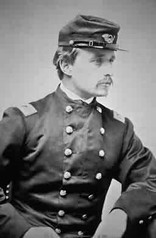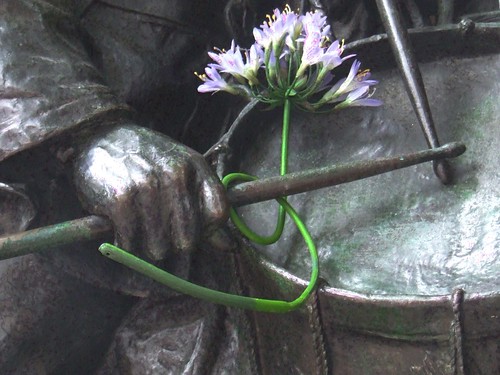There's a silent anvil here in Massachusetts today. The anvil belonged to farrier Dave Reed of Brimfield. You probably didn't know Dave, but then again, maybe you did. Or maybe you know someone a lot like him.
This article is my way of saying good-bye to Dave, and tipping my hat to horseshoers like him. They're out there. But they're disappearing from the back roads every day. Soon they might all be gone, unless we realize what they had to teach us. A lot of farriers I know who are working now chose the profession because they had been around horseshoers like Dave Reed.
I met Dave back in the early 1980s. Dave was one of a whole legion of farriers in that era who had come back from Vietnam and found their places behind the wheel of a rattley pickup truck. It probably had a dog in the passenger seat. Horseshoers like Dave Reed would always have a good story about how that dog got there.
Being a horseshoer worked out really well for a lot of those veterans, especially when they kept to the back roads in the small towns, away from the big stables and show barns. They could keep their own hours, and be their own employers. There weren't many rules and their biggest competitor was in the mirror, as the profession by the time I came along was changing and demanding that they up their skills--or lose out to someone with a shinier truck, a bigger belt buckle and a better sales pitch.
But back then, there were few books, few classrooms, the tests were optional and horseshoers like Dave Reed could always pack up and move to Vermont or Maine or Montana. A lot of them did.
There was a time when farriers didn't need or want to know how to make roadster shoes. They didn't need letters after their names. They didn't carry briefcases and they couldn't spell or pronounce arteriovenous anastomoses or care what it meant.
Horseshoers like Dave Reed didn't go to many clinics. When they did it, they could sense B.S. by the second slide and I used to smile when I'd see them get up and leave. "Aw, there was nothing there for me," they'd tell me later. I knew what they meant, because I'd catch on by the fourth or fifth slide and I'd be right behind them.
But horseshoers like Dave Reed would come around and stand rooted to the spot when someone like Bob Skradzio was giving a clinic. They'd say it was because he didn't show slides but I knew it was because his handshake was just as strong as theirs, and because he looked them in the eye.
Horseshoers like Dave Reed were the last ones to take the coal forges out of their trucks, and they don't hang up on the people who call looking for help with two-year-old drafts or the rank ones no one else wants to shoe. They shrug. Smoke cigarettes. And somehow get it done, even if it's not pretty.
You don't want to cross horseshoers like Dave Reed. They can have pretty thin skin sometimes. And speaking of skin, their tattoos are the real kind, with anchors or eagles, and you know they got them in places like Bangkok but they never will get around to telling you what the tattoos mean. Or what really happened the night they got those tattoos.
Horseowners would tolerate their erratic schedules because they knew that horseshoers like Dave Reed might not show up when they wanted them but would when they needed them. If their barns burned down or they had a child in the hospital or a horse was injured in a trailer wreck, these are the guys who would show up and probably forget to leave a bill. Even if they didn't shoe there anymore. I've seen it happen.
Horseshoers like Dave Reed don't hold much stock in horse whisperers. What they do is more like a growl but the horses seem to understand. It's hard to fool a horse. They know that.
Sometimes I think what's wrong with the horse world today is that we've forgotten that being a farrier shouldn't require a business background or a pile of impressive references or a brand new truck or a last name that is a dynasty at the anvil. The job takes character.
The most successful farriers I know seem to be the ones who are characters...and who have character, too. Lots of it. Because you need it. Some days, more than others. It shows up in the way you treat the horse, the jokes you choose to tell (or not tell) the customer, and the time you take explaining to the kid working the drive-through window what a farrier is.
You can do it without character, of course, but you probably won't thrive. You'll always be making more rules and upping your prices and changing your clients and buying new tools. It might be years until you figure out that you need to relax and let the job change you. You can't do much to change the job.
I never actually saw Dave Reed shoe a horse, that I recall. I don't have any shoes he made hanging on the wall. He never wrote an article for or with me. But he never let me down because all Dave Reed ever was was exactly who he was: a horseshoer. A character. And a friend.
Most of the time, I find that all three of those things come together naturally in one package. I hope it always will be that way.
Photo credit: An anvil in the woods would suit horseshoers like Dave Reed. Photo by Jake Matthews.
© Fran Jurga and Hoofcare Publishing; Fran Jurga's Hoof Blog is a between-issues news service for subscribers to Hoofcare and Lameness Journal. Please, no use without permission. You only need to ask. This blog may be read online at the blog page, checked via RSS feed, or received via a digest-type email (requires signup in box at top right of blog page). To subscribe to Hoofcare and Lameness (the journal), please visit the main site, www.hoofcare.com, where many educational products and media related to equine lameness and hoof science can be found. Questions or problems with this blog? Send email to blog@hoofcare.com.
Follow Hoofcare + Lameness on Twitter: @HoofcareJournal
Read this blog's headlines on the Hoofcare + Lameness Facebook Page
Disclosure of Material Connection: I have not received any direct compensation for writing this post. I have no material connection to the brands, products, or services that I have mentioned, other than Hoofcare Publishing. I am disclosing this in accordance with the Federal Trade Commission’s 16 CFR, Part 255: Guides Concerning the Use of Endorsements and Testimonials in Advertising.




















